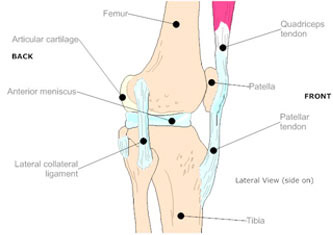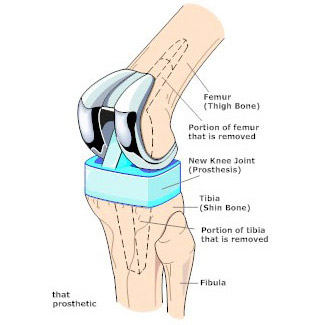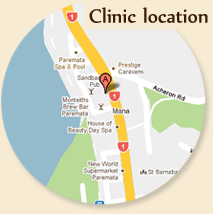Hip replacement procedure - Mr Nigel Willis
Introduction
This information, compiled by Nigel Willis, is designed to ensure that you understand what is involved with your upcoming hip replacement surgery and what to expect before, during and after the procedure. Understanding and following these instructions is paramount in order to maximise the benefits of surgery. Mr Willis, physiotherapists and nurses will help further educate you on all matters relating to the procedure.
There are potential complications that may occur during or after hip replacement surgery, however Mr Willis will inform you about these prior to you agreeing to undergo the procedure. Being an elective procedure means that you can choose not to have it performed if you are not willing to accept the risks involved. Rather than undergoing surgery, you may choose to continue with conservative (non-operative) treatment of your condition.
-
What is a hip replacement?
Hip replacement surgery
Hip joint replacement is an operation that involves removing a severely impaired hip joint and replacing it with an artificial joint. The aim of this procedure is to relieve pain and restore function to the joint.
In a healthy hip, smooth cartilage covers the ends of the femur (thighbone), as well as the socket (known as the acetabulum) in the pelvis into which the ball end of the femur fits. The cartilage acts as a cushion and allows the ball to glide easily inside the socket. The surrounding muscles support the joint, allowing it to move freely.
Hip replacement surgery is considered one of the most effective and successful operations developed in surgical history. Whilst commonly thought of as a procedure for "old people", it is also performed on young and active patients if they are significantly disabled.
Why is hip replacement performed?
The most common cause of deterioration of the hip joint is osteoarthritis. This condition causes the cartilage to become damaged and worn, allowing the bones within the joint to rub together. Movement of the joint causes the ball to grind into the socket, causing the bone ends to become roughened and irregular. This, together with the development of small breaks in the bone, causes pain and stiffness.
Hip replacement surgery may also be performed following a fracture or break of the top part of the femur, often as a result of a fall. Less commonly, a hip replacement may also be necessary due to hip damage or decline caused by bone death, rheumatoid arthritis, or bone growth disorders. In a non-emergency situation, your doctor is likely to recommend a hip replacement only when other treatments for your arthritis (such as medication, physiotherapy and exercise) are no longer effective.
-
What happens prior to surgery?
Nigel Willis will ask you about your general health, medication and any allergies prior to surgery, to ensure that you are fit for the procedure. You can continue to take all of your regular medication, such as pills for high blood pressure, diabetes or heart problems. If you take Asprin, please stop taking it one week prior to surgery. It is important that you immediately report any infections, particularly relating to skin, urine and teeth.
Most patients will be admitted to hospital the day of surgery. Hospital staff will look after your clothes and toiletries whilst you are in surgery. Any valuables should be left with family, a partner or friend.
It is important that you pre-arrange added home assistance, as you may need this once you have been discharged from hospital. You should also arrange transport from the hospital back to your home.
You will have the opportunity to ask questions prior to the procedure being performed.
-
The surgical procedure
Before this procedure is performed, an intravenous tube will be inserted into your arm to administer necessary medications and fluids during surgery. You will then be taken to the operating room and given anesthesia.
The surgery usually takes two to four hours, although this is dependent upon the severity of the arthritis in your hip. In the operating room, a urinary catheter will be inserted and left in place for one or two days.
Surgery begins with an incision being made along the side of the hip joint that is to be replaced. The muscles that support the hip joint are detached and the damaged ball of the hip joint is cut from the top of the femur. The femoral component of the prosthesis is inserted into the femur and the acetabular component of the prosthesis is inserted into the prepared socket area in the pelvic bone. The artificial ball and socket are then fitted together and the surgeon reattaches the muscles to the top of the femur. Drainage tubes may be inserted to drain any fluid and/or blood from the new joint and the incision is then closed.
Antibiotics are usually given during and after the operation to prevent the development of infection in the new joint. A blood transfusion may also be required. This will be discussed by the surgeon prior to surgery.
-
Risks & complications of the procedure
As with all major surgical procedures, complications can occur. Some of the most common complications following hip replacement are:
Anesthesia
Problems can arise when the anesthesia given during surgery that causes a reaction with other drugs that the patient is taking. In rare cases, a patient may have problems with the anesthesia itself. In addition, anesthesia can affect lung function because the lungs don't expand as well while a person is under anesthesia. Be sure to discuss the risks and your concerns with your anesthesiologist.
Blood clots
Blood clots in the large veins (deep venous thrombosis, or DVT) of the leg and pelvis are common after orthopaedic surgery, especially joint replacement surgery. The risk of developing a blood clot depends on several factors including the type of surgery, other medical problems, medications you may be taking, smoking history, as well as other factors.
Blood loss
Blood loss is a part of surgery. Some surgeries, such as hip replacement, incur blood loss that can lower your blood count after the procedure. If you develop a post-operative anemia, or low blood count, a transfusion may be recommended.
Infection of the replacement joint
One of the main problems associated with hip joint replacements is that infections of these implanted joints can become a very serious problem. This can occur any time, from the day after surgery to several years later. However you can follow specific steps in order to help prevent the onset of infection. Some of the steps you should take are to:
- • Arrange to see your doctor to treat all suspected urinary tract infections.
- • Look for signs of hip infection, including pain, redness, swelling or increased warmth.
- • Establish the restrictions of all activities prior to undertaking them.
- • Advise your dentist of your hip replacement.
-
What happens after surgery?
You will be sent to the recovery room, and as the anesthesia wears off you will slowly regain consciousness. A nurse will be with you, and will encourage you to use the deep breathing and coughing machine to help clear your lungs and prevent pneumonia. You will also be given pain medication and will find a foam wedge or pillows placed between your legs to help hold your joint in place. When you are fully conscious, you will be taken back to your hospital room
Once you return to your hospital room you will be required to rest quietly overnight. You will use the deep breathing machine and be given coughing exercises to help clear your lungs and prevent pneumonia. You will also be given the following:
- • Regular medications you took before the operation.
- • Intravenous antibiotics for the first 24 hours.
- • Pain relief medications (either pills or a pain pump).
- • Blood thinners.
- • Sleep with a pillow between your legs for six weeks.
- • Do NOT drive for six weeks.
- • Avoid domestic air travel for six weeks and international air travel for three months.
- • You may walk unlimited distances.
- • Limit bending of the hip to a right angle (ie. sitting).
- • Avoid low seats.
- • Please wear your surgical stockings as instructed.
- • Return to the office for suture removal two weeks after surgery.
The nursing staff will check your pulse, blood pressure, temperature and your leg at regular intervals.
In most cases you will be able to walk the next day. You will be given a few set bedside exercises by your physician or physical therapist. Specific physical goals will be set by Nigel Willis and your therapist and once these have been met, you will be permitted to return home.
You will be given crutches or a walker for approximately six weeks following surgery. Here are other instructions that you will need to adhere to:
We advise that you contact the rooms or the hospital if you have any concerns or problems, such as bleeding, persistent oozing from the wound, unexplained swelling, increasing pain or general illness. These should be investigated, rather than ignored.
-
Rehabilitation
The success of your hip replacement surgery will depend largely on how well you follow your instructions regarding home care during the first few weeks after surgery.
Regular exercises to restore your normal hip motion and strength and a gradual return to everyday activities are important for your full recovery. Nigel Willis and your physical therapist may recommend that you exercise 20 to 30 minutes 2 or 3 times a day during your early recovery.
Early post-operative exercises are important for increasing circulation to your legs and feet to prevent blood clots. They also are important to strengthen muscles and to improve your hip movement.
You may begin these exercises in the recovery room shortly after surgery. It may feel uncomfortable at first, but these exercises will speed your recovery and reduce your postoperative pain.
A rehabilitation program will be set for you and should include:
- • A graduated walking program, initially in your home and later outside.
- • A walking program to slowly increase your mobility and endurance.
- • Resuming other normal household activities.
- • Resuming sitting, standing, and walking up and down stairs.
- • Specific exercises several times a day to restore movement.
- • Specific exercises several times a day to strengthen your hip joint.
- • You may wish to have a physical therapist help you at home.
Please note that this orthopaedic surgery procedure is elective (you can choose to have this surgery or not). The decision to choose surgery is made at the end of a thorough consultative process between you, your othopaedic surgeon and where required, other medical specialists.
It is very rare where two people have exactly the same issue, so each procedure and post-surgery treatment is specifically diagnosed and tailored to your individual requirements.
Therefore, the information provided here is for general advice only and is not a substitute for a consultation appointment with your orthopaedic surgeon.
For consultations with Mr Nigel Willis, please ask your GP for a referral.





